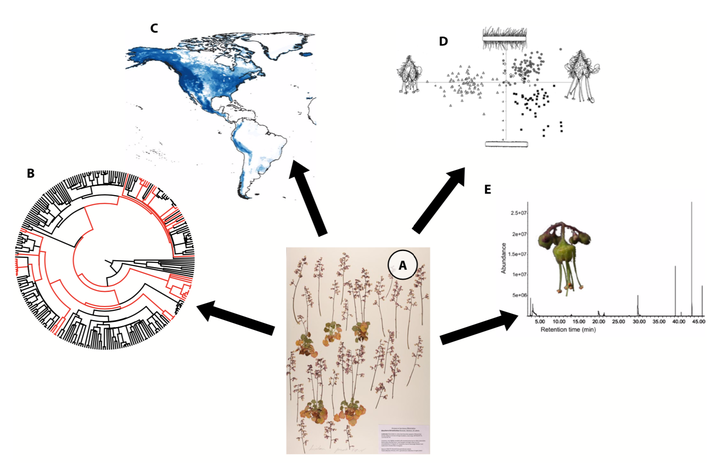
Abstract
Traditionally, the generation and use of biodiversity data and their associated specimen objects have been primarily the purview of individuals and small research groups. While deposition of data and specimens in herbaria and other repositories has long been the norm, throughout most of their history, these resources have been accessible only to a small community of specialists. Through recent concerted efforts, primarily at the level of national and international governmental agencies over the last two decades, the pace of biodiversity data accumulation has accelerated, and a wider array of biodiversity scientists has gained access to this massive accumulation of resources, applying them to an ever-widening compass of research pursuits. We review how these new resources and increasing access to them are affecting the landscape of biodiversity research in plants today, focusing on new applications across evolution, ecology, and other fields that have been enabled specifically by the availability of these data and the global scope that was previously beyond the reach of individual investigators. We give an overview of recent advances organized along three lines: broad-scale analyses of distributional data and spatial information, phylogenetic research circumscribing large clades with comprehensive taxon sampling, and data sets derived from improved accessibility of biodiversity literature. We also review synergies between large data resources and more traditional data collection paradigms, describe shortfalls and how to overcome them, and reflect on the future of plant biodiversity analyses in light of increasing linkages between data types and scientists in our field.